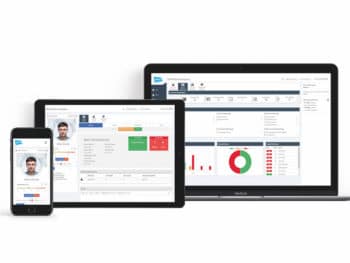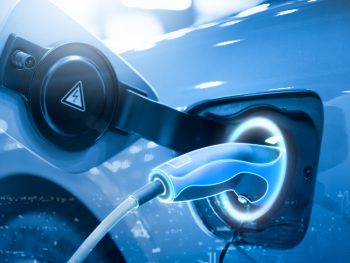Fleet Management Focus: New ways for efficiency gains
Fleets are facing pressure to improve efficiency across the business. Fortunately, the industry offers a wide range of management solutions, products and services to cut costs, improve productivity and give managers more control over their vehicles. Here are just a selection…
Efficiency improvement

An intuitive route optimisation programme keeps customers informed and ensures that a fleet is being utilised as efficiently as possible
For fleets, fuel is more costly than ever, so ensuring vehicles are working smarter – not harder – is key. One way of achieving this is by implementing an intuitive route optimisation programme that both keeps customers informed and ensures that a fleet is being utilised as efficiently as possible.
Route optimisation considers a range of factors to decide the most efficient routes for your fleet, helping to reduce operating cost and improve driver productivity. By considering multiple factors, ranging from fleet size, traffic conditions, number of drop-offs and even customer requests, Trakm8’s software has proven capabilities in improving end-user delivery experience.
Route optimisation software helps fleets to make the most of a vehicle’s journey, intuitively plotting delivery points to ensure each fleet asset is being utilised in the best way. Not only can such software help businesses achieve savings on fuel expenditure, but it also maximises productivity, too.
By providing drivers with intuitively planned routines, fleet assets can be driven more efficiently – ensuring drivers can fulfil more orders, without increasing time on the road or fuel expenditure. What’s more, the route planning platform can be totally personalised by delivery businesses, with a function that enables them to send real-time updates to their customers on the progress of their order.
“Optimisation of fleet operations can be revolutionary for fleets,” says Nick Guise, group marketing manager, Trakm8. “Especially when working in busy periods, optimisation not only helps achieve game-changing savings on fuel costs, but it allows drivers to maximise their delivery routes and save time.
“At Trakm8 we have a wide range of experience developing solutions and helping fleets to implement cutting edge technologies and software,” adds Guise. “These are adaptable to fleets of a variety of sizes and provide intelligence and insights that reduce risk and boost efficiency across their operations.”
Sharing is caring

Targa4electric can help fleets go electric
Corporate shared mobility is often overlooked, but can be one of the most effective levers to cut costs and increase utilisation within fleets. With shared mobility solutions, vehicles are used more often and more efficiently, enabling the fleet manager to remove unnecessary vehicles and provide a convenient, safe and cost-effective mobility solution for employees.
Studies show that shared corporate fleets can manage their normal operational activities with 5-10% fewer vehicles, with no negative impact on employee mobility. Targa Telematics’ Corporate Car Sharing solution utilises keyless technology to provide a seamless user experience and can be implemented on ICE, PHEV, and full electric vehicles, enabling fleet managers to gradually introduce EVs to the company fleet, whilst monitoring their adoption and suitability for different employee groups.
Along with the introduction of corporate shared mobility, fleet management solutions can further assist companies in reducing costs and their environmental footprint by providing dedicated tools to manage the process of fleet electrification. Targa4electric, the new EV suitability assessment tool from Targa Telematics, empowers fleet managers to make informed decisions about the transition to electric vehicles by analysing telematics data from their fleet and detailing the most appropriate vehicle type and model in each case. Many variables are considered in the analysis, including the location, speed and distance of journeys travelled, driving style, number of stops, and availability of charging points. The fleet manager receives clear recommendations, including where additional charging infrastructure could be required, enabling them to understand the operational and financial viability of transitioning each vehicle. Once EVs have been introduced to the fleet, Targa Telematics’ fleet management solution ensures the benefits are realised by monitoring the correct charging and usage of the vehicles.
Go geospatial

Aidan McClean, CEO, UFODrive
Aidan McClean, CEO, UFODrive
The transition to EVs isn’t easy or simple. Any unnecessary complications, or fears of factors such as range anxiety quickly put off potential drivers, who may feel daunted by the mindset change that EVs necessitate.
Range anxiety is a common issue when it comes to both current EV users and those considering making the jump to electric. A fear of going without fuel is easily remedied by the frequency of petrol stations, but without the reassurance of charging infrastructure to support EV drivers, the fear of being left stranded with a drained battery is a common one.
Accessible, dynamic and smart software here is essential: drivers, whether for their professional role as a courier or as an everyday user, need to know where chargers are, which ones charge quickly, and if they are in use or even working at all. Fleet managers – and delivery and courier companies – need to know their whole fleet’s charging schedule is optimised when they’re charging overnight or between shifts.
The latest software is essential – for drivers making the most of the chargers we do have, and fleet managers making the most of the downtime needed to use them. Furthermore, with this software, real-time geospatial data can be collected and analysed – vital, particularly in the early stages of the EV revolution, as every mile driven or journey completed adds new insight into the range of each driver, car and battery.
AI advantages

Barney Goffer, UK product manager at Teletrac Navman
Barney Goffer, UK product manager, Teletrac Navman UK
The pressure to optimise cost and efficiency continues to impact commercial fleet managers everywhere, but against the backdrop of today’s economic climate, it is proving increasingly more demanding. In a recent survey of more than 1,800 fleet operators, Teletrac Navman found that rising fuel costs (39%), disruption due to Covid-19 (32%), and supply chain pressure (31%), presented the biggest challenges.
While these hurdles continue to obstruct the path of fleet owners, advances in technology are having a positive impact on driving cost reductions and operational efficiencies. One such solution that is paving the way for the commercial fleet market – specifically telematics – and aiding in the quest for more efficient and cost-effective fleets, is artificial intelligence (AI). The smart technology can be used to analyse and interpret telematics data in real-time, to deliver valuable and actionable insights that fleet managers can turn into informed decisions that can cut through the adversities to truly have an impact.
Traditional telematics platforms require users to spend an excessive amount of time analysing digital reports to identify opportunities for improvement. However, AI-powered and machine learning platforms completely remove the data analysis period for users. As a result, fleet managers are now empowered with a much greater sense of productiveness and control.
Solutions such as Teletrac Navman’s TN360 enables businesses to recognise patterns of efficiency and crucially, inefficiency, to highlight instant shortcomings and opportunities. Areas of analysis include route planning, logistic workflows, maintenance, compliance, driver behaviour, and fuel management – with the latter two closely linked.
Fix your fleet….

DAVIS Fleet ensures data is simplified, summarised and consolidated
DAVIS Fleet is a flexible, automated fleet management software that gives users the ability to customise settings, processes and workflows to suit their fleet strategy. Fleet management can be complex, particularly when there are many data streams involved. With DAVIS Fleet the data is simplified, summarised and consolidated so that users can access everything they need to help steer their fleet to efficiency.
DAVIS Fleet includes vehicle, accident, and mileage management as well as CO2 analysis and fleet compliance. This new software will measure a fleet’s environmental impact quickly and accurately and enables users to set clear emission targets and drive towards a greener future.
The efficiency dashboard of DAVIS Fleet displays CO2 emissions and MPG statistics, allowing users to measure the environmental and financial impact of different vehicles or fuel type. The new and improved vehicle profile tab now includes the P11D value, benefit in kind (BiK) percentages, number of electric miles and if fuel benefit is received too.
Vehicle lifecycles are intuitively presented in DAVIS Fleet and users have a complete view of all vehicles on order, in life and disposed. Users gain an instant overview of their contracts for proactive management of those that are informally extended or due to expire. Fleet managers can review contracted mileage against contract length and reallocate vehicles where necessary.
DAVIS Fleet also features a maintenance tab which populates MOT and road tax data, as well as any servicing or maintenance due/completed on a vehicle and users can add windscreens, tyres, etc helping you to keep on top of your vehicle compliance.
The platform has been developed to be flexible enough to manage assets, which is a useful benefit for companies with equipment and machinery that requires service management.
The right tools for the job

Beverley Wise, Webfleet regional director, Bridgestone Mobility Solutions
Beverley Wise, Webfleet regional director, Bridgestone Mobility Solutions
Sombre economic forecasts reinforce the need for fleets to double down on their efforts to make efficiency savings and to keep a lid on operating costs.
The actionable insights imparted by telematics solutions – and the streamlined processes they offer – sit at the heart of the go-to resources that can help cut spend and ensure 2023 budgetary targets are hit.
Fuel prices may have fallen from their peak last summer, but they remain notably higher than the average prices in recent years. All the while business journeys, for most fleets, remain an operational necessity.
The functionality of systems such as Webfleet – including everything from visibility over real-time vehicle movements, fleet mpg and driving performance to maintenance reporting and intelligent routing and scheduling – offer genuine cost saving opportunities.
Fuel usage patterns and the causes of fuel waste can be easily identified, more efficient routing and vehicle utilisation introduced and driver performance improvement pro-grammes initiated.
Furthermore, they offer dedicated tools to support the cost-efficient transition to electric vehicles – from insights into real time battery levels, remaining driving ranges and energy usage to charging processes and vehicle charge levels. Faced with soaring energy costs, the optimisation of EV operations has become more important than ever.
Telematics data can also help to ensure robust service, maintenance and repair (SMR) pro-cesses. Vehicle diagnostic information and malfunction alerts, for instance, mean repairs can be carried out quicker. Maintenance planning tools allow fleet managers to plan maintenance intervals more efficiently based on real measured mileage, while integrated camera systems, incorporating the latest in machine vision and artificial intelligence, can help mitigate costly behaviour behind the wheel.
Telematics on trend for EVs…

Geotab’s Electric Vehicle Suitability Assessment tool uses telematics data to understand a fleet’s specific needs
Geotab’s Electric Vehicle Suitability Assessment (EVSA) tool is powered by the largest dataset for real-world electric vehicle performance. It uses telematics data to understand a fleet’s specific needs and makes considered recommendations for fleet operators considering a transition to zero emission vehicles.
It does this by measuring real-world EV performance metrics against existing fleet vehicles, thereby uncovering potential real-world financial savings and environmental benefits to help fleets electrify with confidence.
By analysing a fleet’s unique driving profiles and patterns, the tool is able to identify the vehicles in your fleet best suited for EV replacement, giving fleets personalised recommendations down to the make and model, as well as taking into consideration local availability, EV performance in extreme weather conditions, and financial costs related to procuring the vehicles themselves.
By using the tool, three key questions can be answered: Which vehicles can be transitioned? Does it make economic sense to go electric? What are the environmental benefits of electrification?
Transitioning to electric vehicles is not the only way to reduce a fleet’s carbon emissions, of course. There are many best practices, powered by data-driven insights, that are delivered through the EVSA tool, that fleet managers can use to make their entire fleet more sustainable. Fleet right-sizing, route optimisation and idling time reduction provide some of the biggest opportunities to reduce carbon emissions from fleet operations, while also reducing costs.
Geotab recently conducted a research study to better understand how compelling the ‘switch to electric’ can be for fleets. Using a deidentified dataset of driving patterns for 46,000 connected ICE vehicles across 17 European countries, the company found compelling evidence around the return on investment (ROI) and the positive sustainability impact of switching to EVs today.












